Different Types Of Meditation
Meditation can be an effective form of stress reduction and has the potential to improve quality of life and decrease health care costs. Meditation involves achieving a state of ‘thoughtless awareness’ in which the excessive stress producing activity of the mind is neutralized without reducing alertness and effectiveness.
Their are many many different types of techniques for meditation from which you can relax your state of mind and body according to you. Meditation was situated within the context of a set of religious beliefs, teachings, and practices. According to some websites, meditation types can be below types:
-
Concentration Meditation
-
Reflective Meditation
-
Mindfulness Meditation
-
Creative Meditation
-
Heart-Centered Meditation
All above mediation falls under five types of Meditation types according to religion and practices, which are:
1. BUDDHIST MEDITATION
Buddhist meditation refers to the meditative practices associated with the religion and philosophy of Buddhism. Buddhist meditation is a form of mental concentration that leads ultimately to enlightenment and spiritual freedom. Meditation occupies a central place in all forms of Buddhism, but has developed characteristic variations in different Buddhist traditions.
-
Zen Meditation (Zazen)
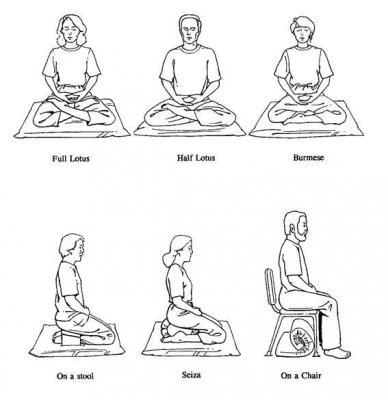
In Japanese, Zazen means “seated Zen”, or “seated meditation”. Zazen is considered the heart of Japanese Soto Zen Buddhist practice. The aim of zazen is just sitting, that is, suspending all judgmental thinking and letting words, ideas, images and thoughts pass by without getting involved in them. The posture of zazen is seated, with folded legs and hands, and an erect but settled spine.
-
Vipassana Meditation
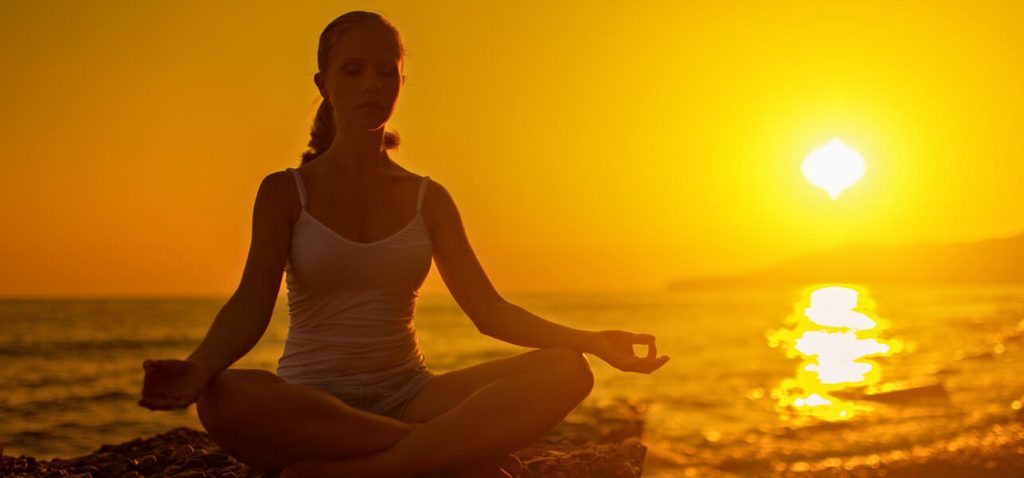 Vipassana in the Buddhist tradition means insight into the true nature of reality,[1] namely as the Three marks of existence: impermanence, suffering or unsatisfactoriness, and the realization of non-self. “Vipassana” is a Pali word that means “insight” or “clear seeing”. Due to the popularity of vipaśyanā-meditation, the “mindfulness of breathing” has gained further popularity in the West as “mindfulness”. Vipassana is an excellent meditation to help you ground yourself in your body, and understand how the processes of your mind work. It is a very popular style of meditation. You can find plenty of teachers, websites, and books about it. If you are new to meditation, Vipassana or Mindfulness are probably good ways for you to start.
Vipassana in the Buddhist tradition means insight into the true nature of reality,[1] namely as the Three marks of existence: impermanence, suffering or unsatisfactoriness, and the realization of non-self. “Vipassana” is a Pali word that means “insight” or “clear seeing”. Due to the popularity of vipaśyanā-meditation, the “mindfulness of breathing” has gained further popularity in the West as “mindfulness”. Vipassana is an excellent meditation to help you ground yourself in your body, and understand how the processes of your mind work. It is a very popular style of meditation. You can find plenty of teachers, websites, and books about it. If you are new to meditation, Vipassana or Mindfulness are probably good ways for you to start.
-
Mindfulness Meditation
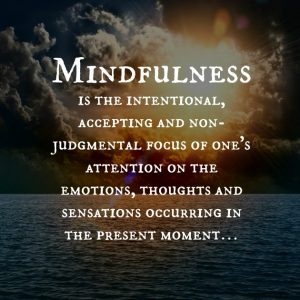 Mindfulness meditation is the process of accomplishing mindfulness through the practice of meditation. Its purpose is to become aware of what is currently happening around the practitioner as opposed to focusing on something different than the present. Mindfulness meditation is also used along with body awareness and yoga as a method for mindfulness-based stress reduction. It is adaptation from traditional Buddhist meditation practices, especially Vipassana. According to “Wikipedia”, Mindfulness meditation can be performed through a series of different techniques and focuses on feelings rather than thinking. It does not require special circumstances and can be accomplished with breathing techniques. Beginning with body relaxation, the mind is directed towards deeper feelings in the heart, with the hopes of letting go of mental attachments and worries.
Mindfulness meditation is the process of accomplishing mindfulness through the practice of meditation. Its purpose is to become aware of what is currently happening around the practitioner as opposed to focusing on something different than the present. Mindfulness meditation is also used along with body awareness and yoga as a method for mindfulness-based stress reduction. It is adaptation from traditional Buddhist meditation practices, especially Vipassana. According to “Wikipedia”, Mindfulness meditation can be performed through a series of different techniques and focuses on feelings rather than thinking. It does not require special circumstances and can be accomplished with breathing techniques. Beginning with body relaxation, the mind is directed towards deeper feelings in the heart, with the hopes of letting go of mental attachments and worries.
-
Loving Kindness Meditation (Metta Meditation)
 Loving-kindness, or metta, as it in called in the Pali language, is unconditional, inclusive love, a love with wisdom. It has no conditions; it does not depend on whether one “deserves” it or not; it is not restricted to friends and family; it extends out from personal categories to include all living beings. Mettā meditation, or often loving-kindness meditation, is the practice concerned with the cultivation of Metta, i.e. benevolence, kindness and amity. The practice generally consists of silent repetitions of phrases like “may you be happy” or “may you be free from suffering”, for example directed at a person who, depending on tradition, may or may not be internally visualized. Some of the traditional phrases used in this meditation is :
Loving-kindness, or metta, as it in called in the Pali language, is unconditional, inclusive love, a love with wisdom. It has no conditions; it does not depend on whether one “deserves” it or not; it is not restricted to friends and family; it extends out from personal categories to include all living beings. Mettā meditation, or often loving-kindness meditation, is the practice concerned with the cultivation of Metta, i.e. benevolence, kindness and amity. The practice generally consists of silent repetitions of phrases like “may you be happy” or “may you be free from suffering”, for example directed at a person who, depending on tradition, may or may not be internally visualized. Some of the traditional phrases used in this meditation is :
May I be safe from harm.
May I be happy just as I am.
May I be peaceful with whatever is happening.
May I be healthy and strong.
May I care for myself in this ever-changing world graciously, joyously.
2. HINDU MEDITATION (Vedic & Yogic)
Hindu meditations are spiritual tools that originate in the Hindu tradition that brings one into a greater understanding with one’s Self, or the Divine. It can be through either chanting, repeating mantras (sacred words and sounds), working with the body (Hatha Yoga) and breath (pranayama), meditating on sacred writings and teachings, and meditations that either focus on an image or those that go beyond all doings of the mind. Their are different sub categories under Hindu Meditation:
-
Mantra Meditation (OM Meditation)
In general, Mantra is a combination of particular words or phrases with some meanings on it. It is used for the sole purpose of sharpening and focusing the mind on vibrations and sounds of the mantra. It is not an affirmation used to convince yourself something. Some experts believe the choice of words and correct pronunciations are critical to this practice, for purposes of achieving ideal vibrations.
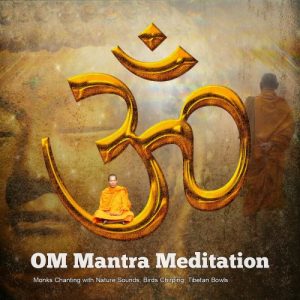
Om is not just a sound or vibration. It is not just a symbol. If you think of Om only as a sound, you will miss it altogether. Om is the mysterious cosmic energy that is the substratum of all the things and all the beings of the entire universe. It is an eternal song of the Divine. It is continuously resounding in silence on the background of everything that exists, According to “Om Chanting and Meditation”
Here are some of the most well-known mantras from the Hindu & Buddhist traditions:
- om
- so-ham
- om namah shivaya
- om mani padme hum
- rama
- yam
- ham
-
Transcendental Meditation (TM)
Transcendental meditation is a simple, natural technique. This form of meditation allows your body to settle into a state of profound rest and relaxation and your mind to achieve a state of inner peace, without needing to use concentration or effort. Transcendental Meditation (TM) refers to a specific form of mantra meditation called the Transcendental Meditation technique,and less commonly to the organizations that constitute the Transcendental Meditation movement. Transcendental Meditation is a specific form of Mantra Meditation introduced by Maharishi Mahesh Yogi in 1955 in India and the West. In the late 1960s and early 1970s, the Maharishi achieved fame as the guru to the Beatles, The Beach Boys and other celebrities.
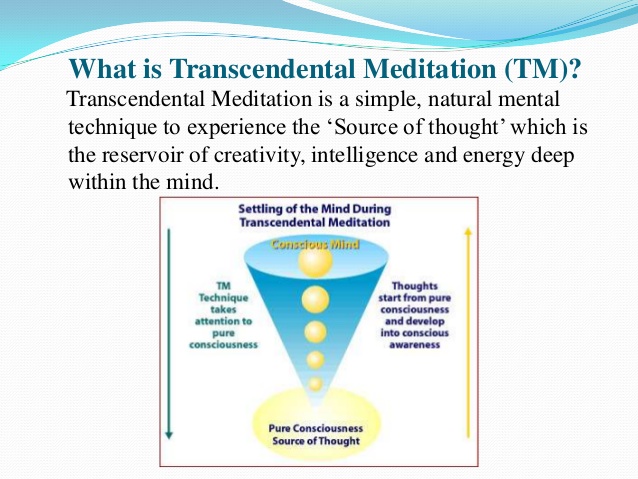 The meditation practice involves the use of a mantra for 15–20 minutes twice per day while sitting with the eyes closed.It is reported to be one of the most widely practiced, and among the most widely researched, meditation techniques, with hundreds of published research studies.The Transcendental Meditation technique has been described as both religious and non-religious, as an aspect of a new religious movement, as rooted in Hinduism, and as a non-religious practice for self-development.
The meditation practice involves the use of a mantra for 15–20 minutes twice per day while sitting with the eyes closed.It is reported to be one of the most widely practiced, and among the most widely researched, meditation techniques, with hundreds of published research studies.The Transcendental Meditation technique has been described as both religious and non-religious, as an aspect of a new religious movement, as rooted in Hinduism, and as a non-religious practice for self-development.
-
Yoga Meditations
 “Yoga”, the Sanskrit word actually means “union with the divine”. The term Yoga means to unite, coordinate, harmonize, work, or transform. It refers to the linking all aspects of our being, from the physical body to our highest intelligence, with the true or universal Self that dwells within the heart. This process occurs in different forms and stages relative to the condition of the individual and variations of time, place and culture. Vedic knowledge is that knowledge of the Divine or higher Self that the practice of Yoga is seeking to realize. Veda is spiritual wisdom and Yoga is its application. The stretching exercises that we in the west associate with yoga were originally designed, thousands of years ago, to help the practitioner gain control of their own life force, a spiritual energy known as Kundalini.
“Yoga”, the Sanskrit word actually means “union with the divine”. The term Yoga means to unite, coordinate, harmonize, work, or transform. It refers to the linking all aspects of our being, from the physical body to our highest intelligence, with the true or universal Self that dwells within the heart. This process occurs in different forms and stages relative to the condition of the individual and variations of time, place and culture. Vedic knowledge is that knowledge of the Divine or higher Self that the practice of Yoga is seeking to realize. Veda is spiritual wisdom and Yoga is its application. The stretching exercises that we in the west associate with yoga were originally designed, thousands of years ago, to help the practitioner gain control of their own life force, a spiritual energy known as Kundalini.
 Below are some practices done in Yoga. The most common and universal Yoga meditation one is the “third eye meditation”. Other popular ones involve concentrating on a chakra, repeating a mantra, visualization of light, or gazing meditations.
Below are some practices done in Yoga. The most common and universal Yoga meditation one is the “third eye meditation”. Other popular ones involve concentrating on a chakra, repeating a mantra, visualization of light, or gazing meditations.
-
Chakra Meditation :
The practitioner focuses his attention on different different energy centres in the body. These energy centres are often call chakras, in total there are 7 main nodes in the human body. Visualization and chanting of a specific mantra for each chakra (lam, vam, ram, yam, ham, om) can energize these centres. This meditation practice usually is done to the heart, third eye and crown chakra.
-
Third Eye Meditation :
This is done by focusing ones attentions towards the spot in-between the eyebrows. This point between the brows can be called the “the third eye” or “ajna chakra”. The main object in question is the the ajna chakra. If the mind loses attention to this spot, one must redirect his attention back at the third eye. Eventually the silent gaps between thoughts widen, this gives you a state of extreme peace. Often times practitioners physically point their eyes toward the third eye while keeping their eyes closed.
-
Tantra :
Unlike the popular view in the West, most Tantra practices have nothing to do with ritualized sex (this was practiced by a minority of lineages). Tantra is a very rich tradition, with dozens of different contemplative practices. The text Vijnanabhairava Tantra, for instance, lists 108 “meditations”, most of them more advanced (already requiring a certain degree of stillness and mind control). Here are some examples from that text:
-
Sound Meditation (Nada Yoga) :
This meditation focuses primarily on sounds. The practice initially starts will an external stimuli in the form of sounds. Soothing sounds like a flute are recommended. This is done to quieten the mind of thoughts and focus primarily on the sounds. The practice then evolves as one hears more internal sounds within the body and mind. The goal of this art is to hear the ultimate sound (para nada), which is a sound without vibrations.
-
Kriya Yoga :
This practice emphasis energization, breathing and meditation exercises taught by Paramahamsa Yogananda. This is well suited for people seeking a devotional aspect to meditation. The spiritual aspects of this yogic art makes it truly original. To learn it, you can apply to receive seal-realization lessons, free of charge.
-
Kundalini Meditation :
This is an expert level Yogic Art. The primary goal of this practice is to awaken the “kundalini energy” which lies dormant in the base chakra. The awakening of the kundalini will energize psychic centres of the body and will lead to enlightenment. There are many pitfalls novice practitioners can face, so it is recommended that this practice be done with a qualified yogi.
-
Gazing Meditation (Trataka) :
This practice is completed by focusing on an external object, typically a flame on a candle, an image or a symbol (yantras). It is done with eyes open and closed, this is done to train the minds power of concentration and visualization. When closing your eyes you must focus on the image or object in the minds eye.
- Merge the mind and the senses in the interior space in the spiritual heart.
- When one object is perceived, all other objects become empty. Concentrate on that emptiness.
- Concentrate on the space which occurs between two thoughts.
- Fix attention on the inside of the skull. Close eyes.
- Meditate on the occasion of any great delight.
- Meditate on the feeling of pain.
- Dwell on the reality which exists between pain and pleasure.
- Meditate on the void in one’s body extending in all directions simultaneously.
- Concentrate on a bottomless well or as standing in a very high place.
- Listen to the Anahata (heart chakra) sound.
- Listen to the sound of a musical instrument as it dies away.
- Contemplate on the universe or one’s own body as being filled with bliss.
- Concentrate intensely on the idea that the universe is completely void.
- Contemplate that the same consciousness exists in all bodies.
-
Pranayama :
Breathing regulation. It is not exactly meditation, but an excellent practice to calm the mind and prepare it for meditation. There are several different types of Pranayama, but the simplest and most commonly taught one is the 4-4-4-4. This means breathing in counting up to 4, holding for 4 seconds, breathing out for 4 seconds, and holding empty for 4 seconds. Breathe through your nose, and let the abdomen (and not the chest) be the one that moves. Go through a few cycles like this. This regulation of breathing balances the moods and pacifies the body, and can be done anywhere.
-
Self-Enquiry and “I Am” Meditation
 Self-inquiry (Atma vichara) involves tracing the source of the I-thought back to its origin in the spiritual heart (hridaya). In the Vedic view this is tracing back our inner flame, the soul or Jiva, Agni, back to its original home and highest birth in the heart. This is a practice of constant wakefulness through which we become conscious in all the three states of waking, dream and deep sleep. Self-inquiry is the primary method through which Self-realization– the realization of our true nature beyond mind and body–is achieved. Self-inquiry is mainly known today through the teachings of Ramana Maharshi (1878-1950), who made this approach accessible to the general public, offering it to any individual who was capable of receiving the teaching.
Self-inquiry (Atma vichara) involves tracing the source of the I-thought back to its origin in the spiritual heart (hridaya). In the Vedic view this is tracing back our inner flame, the soul or Jiva, Agni, back to its original home and highest birth in the heart. This is a practice of constant wakefulness through which we become conscious in all the three states of waking, dream and deep sleep. Self-inquiry is the primary method through which Self-realization– the realization of our true nature beyond mind and body–is achieved. Self-inquiry is mainly known today through the teachings of Ramana Maharshi (1878-1950), who made this approach accessible to the general public, offering it to any individual who was capable of receiving the teaching.
3) CHINESE MEDITATION
One of the earliest forms of meditation was the ancient Chinese meditation, and includes 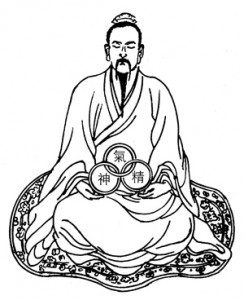 Taoist meditation, wuji qigong and Chi Gun. Chinese meditation has been practiced for many years and it has been found highly effective, even today, for relaxing the mind and body and bringing people to a state of rumination. While it can be practiced both sitting or standing, this type of meditation lends itself to bringing the mind to a time on contemplation and reflection. It is one of the many forms of meditation that are based on the Chinese traditional medical theory.
Taoist meditation, wuji qigong and Chi Gun. Chinese meditation has been practiced for many years and it has been found highly effective, even today, for relaxing the mind and body and bringing people to a state of rumination. While it can be practiced both sitting or standing, this type of meditation lends itself to bringing the mind to a time on contemplation and reflection. It is one of the many forms of meditation that are based on the Chinese traditional medical theory.
-
Taoist Meditations
Taoism (Daoism) is a Chinese philosophy and religion, dating back to Lao Tzu. It emphasizes living in harmony with Nature, or Tao, and it’s main text is the Tao Te Ching, dating back to 6th century B.C. Later on some lineages of Taoism were also influenced by Buddhist meditation practices brought from India, especially on the 8th century. The chief characteristic of this type of meditation is the generation, transformation, and circulation of inner energy. The purpose is to quieten the body and mind, unify body and spirit, find inner peace, and harmonize with the Tao. Some styles of Taoist Meditation are specifically focused on improving health and giving longevity.
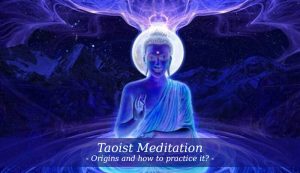
There are different types of Taoist meditation, and they are classified in three: “insight”, “concentrative”, and “visualization”. Brief of those are as follow:
-
Emptiness meditation
To sit quietly and empty oneself of all mental images (thoughts, feelings, and so on), to “forget about everything”, in order to experience inner quiet and emptiness. In this state, vital force and “spirit” is collected and replenished. This is similar to the Confucius discipline of “heart-mind fasting”, and it is regarded as “the natural way”. One simply allows all thoughts and sensations arise and fall by themselves, without engaging with or “following” any of them. If this is found to be too hard and “uninteresting”, the student is instructed with other types of meditation, such as visualization and Qigong
-
Breathing meditation
To focus on the breath, or “unite mind and qi”. The instruction is “focus your vital breath until it is supremely soft”. Sometimes this is done by simply quietly observing the breath (similar to Mindfulness Meditation in Buddhism); in other traditions it is by following certain patterns of exhalation and inhalation, so that one becomes directly aware of the “dynamisms of Heaven and Earth” through ascending and descending breath (a type of Qigong, similar to Pranayama in Yoga).
-
Neiguan (“inner observation; inner vision”)
Visualizing inside one’s body and mind, including the organs, “inner deities”, qi (vital force) movements, and thought processes. It’s a process of acquainting oneself with the wisdom of nature in your body. There are particular instructions for following this practice, and a good book or a teacher is required.
These meditations are done seated cross-legged on the floor, with spine erect. The eyes are kept half-closed and fixed on the point of the nose.
-
Qigong (Chi kung)
Qi is the Chinese term for life energy, which is thought to flow through the body. It can also be translated as breath, air, internal power or vitality. Gong means work, nurture, practice or cultivation. Put together as Qigong, both mean cultivation of life energy. It is a holistic system of coordinated body posture and movement, breathing, and meditation used for health, spirituality, and martial arts training.
also be translated as breath, air, internal power or vitality. Gong means work, nurture, practice or cultivation. Put together as Qigong, both mean cultivation of life energy. It is a holistic system of coordinated body posture and movement, breathing, and meditation used for health, spirituality, and martial arts training.
4) CHRISTIAN MEDITATION
Christian meditation is a form of prayer in which a structured attempt is made to become aware of and reflect upon the revelations of God.The word meditation comes from the Latin word meditārī, which has a range of meanings including to reflect on, to study and to practice. Christian meditation is the process of deliberately focusing on specific thoughts (such as a bible passage) and reflecting on their meaning in the context of the love of God.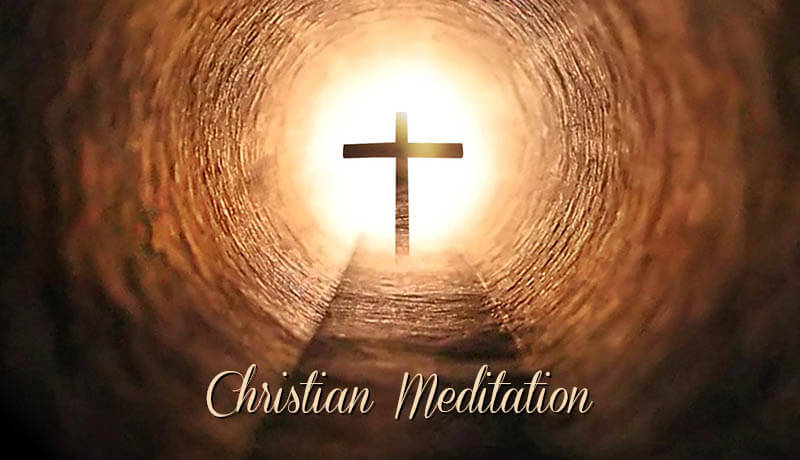
Some of the practices of Christian Meditation are:
-
Contemplative Prayer
Which usually involves the silent repetition of sacred words or sentences, with focus and devotion.
-
Contemplative Reading
Or simply “contemplation”, which involves thinking deeply about the teachings and events in the Bible.
-
“Sitting With God”
A silent meditation, usually preceded by contemplation or reading, in which we focus all our mind, heart and soul on the presence of God.
5) GUIDED MEDITATIONS
Guided meditation is a process by which one or more participants meditate in response to the guidance provided by a trained practitioner or teacher, either in person or via a written text, sound recording, video, or audiovisual media comprising music or verbal instruction, or a combination of both.
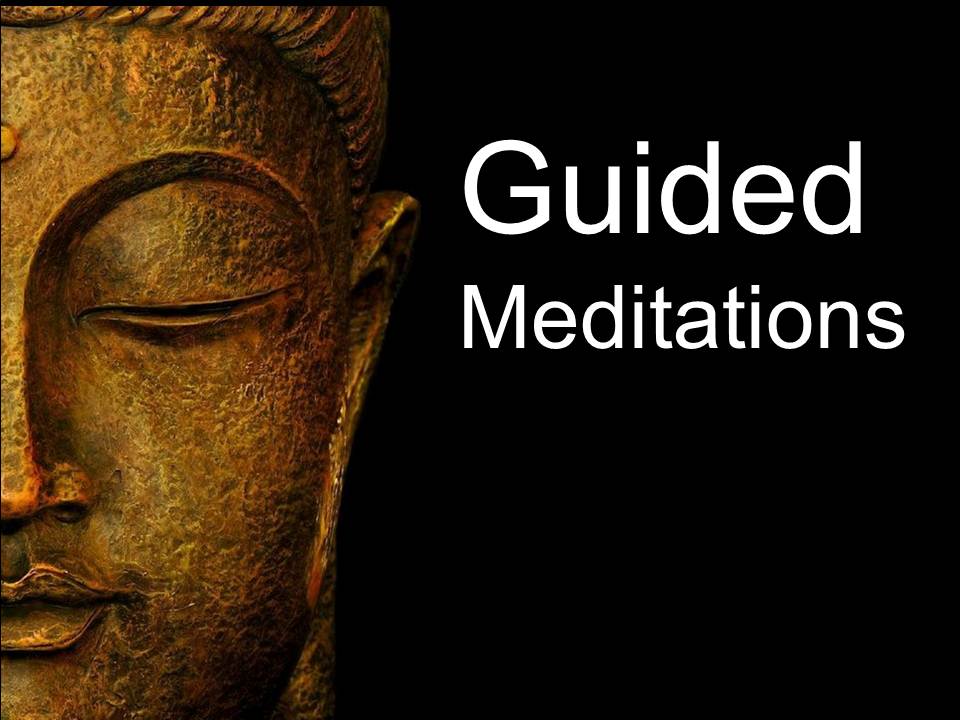 Guided meditation as an aggregate or synthesis of techniques including meditation music and receptive music therapy, guided imagery, relaxation, meditative Praxiteles, and self-reflective diary-keeping or journalism has been shown to be effective in precipitating therapeutic, rehabilitative, and educational benefits when employed as an adjunct to primary clinical and instructional strategies, including as a means to lower levels of stress,[excessive citations] minimize the frequency, duration, and intensity of asthmatic episodes, control and manage pain, develop coping skills, improve ability to carry out demanding tasks in exacting situations, decrease the incidence of insomnia, abate feelings of anger, reduce occurrences of negative or irrational thinking, assuage anxiety, raise levels of optimism, enhance physical and mental aptitude and increase general feeling of well-being and self-reported quality of life.
Guided meditation as an aggregate or synthesis of techniques including meditation music and receptive music therapy, guided imagery, relaxation, meditative Praxiteles, and self-reflective diary-keeping or journalism has been shown to be effective in precipitating therapeutic, rehabilitative, and educational benefits when employed as an adjunct to primary clinical and instructional strategies, including as a means to lower levels of stress,[excessive citations] minimize the frequency, duration, and intensity of asthmatic episodes, control and manage pain, develop coping skills, improve ability to carry out demanding tasks in exacting situations, decrease the incidence of insomnia, abate feelings of anger, reduce occurrences of negative or irrational thinking, assuage anxiety, raise levels of optimism, enhance physical and mental aptitude and increase general feeling of well-being and self-reported quality of life.
Guided Medications usually come in both forms as in audio and video. Below are some categories you can go with Guided Meditation:
-
Traditional Meditations
With these types of audios, the voice of the teacher is simply there to “illustrate” or “guide” the way for your attention, in order to be in a meditative state; there is more silence than voice in it, and often no music. Examples are the ones offered by Thich Nhat Hanh and Tara Brach, which are rooted in authentic Buddhist practices. The purpose is to develop and deepen the practice itself, with all the benefits that come with it.
-
Guided Imagery
Makes use of the imagination and visualization powers of the brain, guiding you to imagine an object, entity, scenery or journey. The purpose is usually healing or relaxation.
-
Relaxation & Body Scans
Helps you achieve a deep relaxation in your whole body. It’s usually accompanied by soothing instrumental music or nature sounds. In Yoga these are called yoga nidra. The purpose is relaxation and calmness.
-
Affirmations
Usually coupled with relaxation and guided imagery, the purpose of these meditations is to imprint a message in your mind.
-
Binaural Beats Meditation
Binaural beats meditation were originally discovered in 1839 by physicist Heinrich Wilhelm Dove. He discovered when signals of two different frequencies are presented separately, one to each ear, your brain detects the phase variation between the frequencies and tries to reconcile that difference. This is used to generate alpha waves (10 Hz), which is the brain wave associated with initial levels of meditation. There is scientific research into why and how binaural beats work.
These all of above are the types of Medication that can be followed in our daily life according to the types of meditation we need or can do. Some ideas and content are taken from Wikipedia source which is reliable and genuine one.




i will try this at home